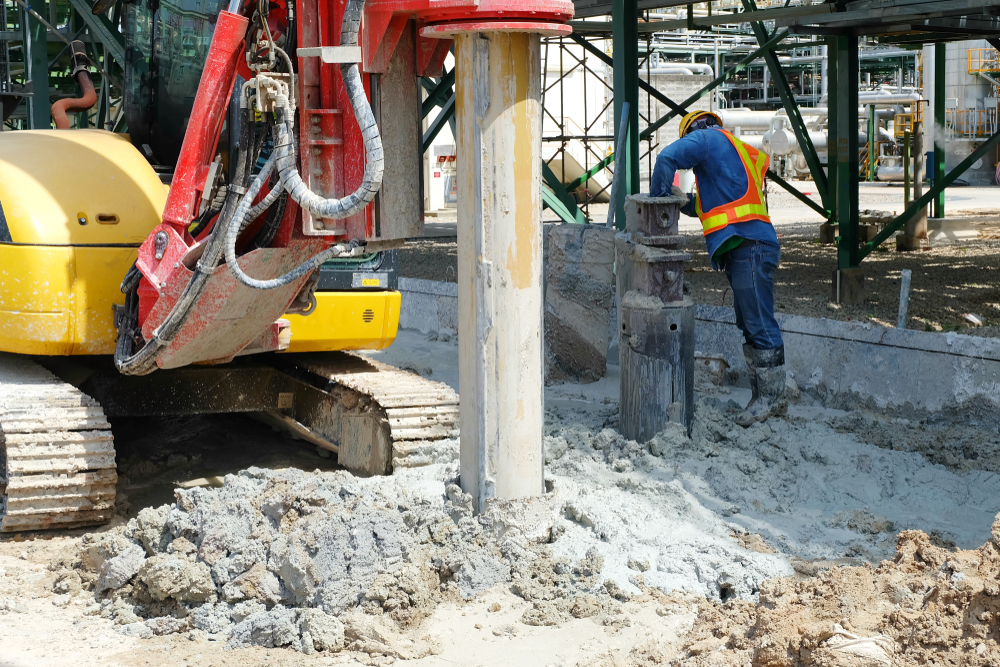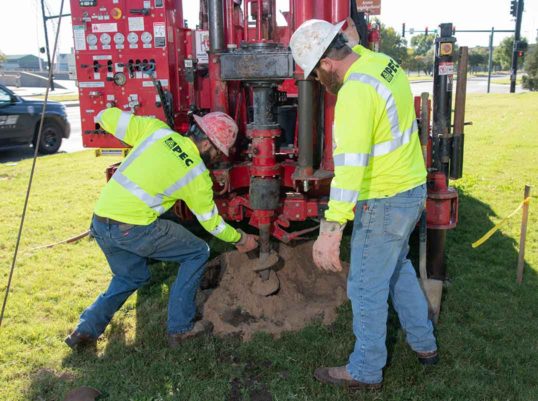Picking the Right Consulting Engineer for Your Complicated Design Project
Wiki Article
The Importance of Soil Analysis and Site Investigation in the Geotechnical Market: Ensuring Safety And Security and Stability in Civil Engineering
In the geotechnical market, dirt analysis and website investigation are fundamental components that underpin the safety and stability of civil design tasks. By thoroughly understanding dirt homes, designers can preemptively resolve prospective difficulties, inevitably guarding architectural honesty.Recognizing Soil Features
In the realm of geotechnical design, a comprehensive understanding of soil buildings is vital for informed decision-making and reliable job style. The characterization of dirt entails the exam of numerous physical and mechanical residential properties, such as grain size distribution, plasticity, cohesion, leaks in the structure, and shear stamina. These residential properties determine exactly how soil acts under various loading problems and environmental impacts, making them vital for evaluating website suitability for construction jobs.Dirt classification systems, such as the Unified Soil Classification System (USCS) and the AASHTO category, supply structures for grouping dirts based on their characteristics. This category help engineers in anticipating habits under stress, water circulation, and negotiation, thereby influencing layout choices and building methods.
Additionally, the interaction between soil and surrounding structures is a vital factor to consider in geotechnical engineering. Recognizing soil buildings helps determine possible obstacles, such as liquefaction in earthquake-prone areas or excessive settlement in soft soils. By completely evaluating these buildings, geotechnical designers can ensure the security, stability, and long life of frameworks, inevitably adding to the overall resilience of civil design projects.
Approaches of Soil Evaluation

In-situ examinations consist of methods such as Standard Infiltration Tests (SPT), Cone Infiltration Examinations (CPT), and vane shear tests. SPT examines the resistance of soil to infiltration, offering data on thickness and stamina, while CPT gauges soil resistance and pore pressure, generating constant accounts of dirt stratigraphy. Vane shear examinations are especially beneficial for analyzing the shear strength of natural dirts.
Laboratory examinations enhance these in-situ evaluations and include sampling dirt for regulated testing. Common laboratory approaches consist of Atterberg restrictions, which determine the plasticity features of fine-grained soils, and compaction tests, which examine moisture-density partnerships. Additional examinations, such as triaxial compression and unconfined compression examinations, are carried out to examine the shear strength of soil examples under various problems.
Duty of Site Investigation
Website examination plays a crucial function in the geotechnical engineering procedure, acting as the foundation for recognizing subsurface problems. This extensive analysis entails organized expedition of dirt and rock properties, groundwater levels, and various other geological features that influence project security and stability.Usually, site examinations incorporate a range of methods, consisting of boring boreholes, tasting, and in-situ testing. These techniques offer essential information on the physical and mechanical attributes of the ground, educating designers about possible difficulties such as soil settlement, bearing capability, and slope security.
In addition, website investigation helps with the identification of dangerous products and contaminants, enabling the implementation of proper removal actions. By establishing an exact subsurface account, site investigations aid to mitigate dangers linked with construction, guaranteeing that projects adhere to safety and security requirements and policies.
The searchings for from a comprehensive site examination not just guide layout choices however also affect building and construction methods and timelines. In recap, the relevance consulting engineer of site investigation can not be overstated; it is a vital action in the geotechnical engineering process, preparing for effective project execution while focusing on public safety and environmental honesty.
Effect on Project Style
A complete understanding of dirt features significantly affects task style in the geotechnical market. Soil analysis notifies engineers concerning the mechanical properties, composition, and behavior of the ground, which are crucial consider determining the usefulness and safety of a construction project. Exact information on soil permeability, stamina, and compressibility allow for the advancement of effective structure designs, making certain that frameworks are adequately supported and secure throughout their life-span.Furthermore, the existence of impurities or unstable soil layers can trigger alterations in job style, such as choosing different construction approaches or materials. This positive approach decreases risks associated to dirt settlement, excessive loading, or side motion, therefore securing both the honesty of the framework and public safety and security.
The assimilation of dirt analysis into project layout likewise helps with compliance with environmental factors to consider and governing demands. By resolving soil-related obstacles early in the layout process, engineers can maximize resource allotment and lower prospective delays and costs connected with unexpected site conditions. Inevitably, complete soil analysis improves the total top quality and sturdiness of civil design tasks, leading to even more resistant and sustainable framework.
Case Studies and Instances
Demonstrating the vital role of dirt evaluation in the geotechnical industry, various case researches highlight its influence on project end results. One significant instance is the construction of a skyscraper structure in downtown Los Angeles, where comprehensive soil screening disclosed unstable subsurface problems. consulting engineer. By identifying the existence of expansive clay, designers had the ability to redesign the foundation, integrating deep pilings that guaranteed stability and safety and security, ultimately stopping possible architectural failures
Finally, a dam task in the Southeast dealt with delays as a result of unexpected dirt disintegration problems. Comprehensive soil analysis allowed engineers to carry out efficient stablizing techniques, ensuring that the dam fulfilled safety laws while sticking to the task timeline. These cases highlight the requirement of thorough soil evaluation and website examination, highlighting their necessary duty in achieving effective and secure civil design jobs.
Conclusion
To conclude, dirt evaluation and website examination are essential elements of the geotechnical market, playing a vital role in guaranteeing the safety and stability of civil engineering jobs. By supplying important data on soil homes and subsurface problems, these processes notify structure layout and building and construction methods. Furthermore, comprehensive examinations add to danger identification and danger mitigation, eventually improving the longevity and toughness of frameworks while enhancing source allowance throughout the project lifecycle.In the geotechnical sector, dirt evaluation and site investigation are foundational aspects that underpin the security and stability of civil engineering tasks. Recognizing soil residential properties assists determine prospective difficulties, such as liquefaction in earthquake-prone areas or too much negotiation in soft soils. SPT examines the resistance of dirt to penetration, offering data on density and strength, while CPT determines dirt resistance and pore stress, producing constant accounts of soil stratigraphy. These situations underscore the requirement of detailed soil analysis and site investigation, highlighting their important role in accomplishing successful and risk-free civil design projects.
In verdict, dirt analysis and website examination are basic components of the geotechnical sector, playing an essential duty in guaranteeing the security and security of civil design projects.
Report this wiki page